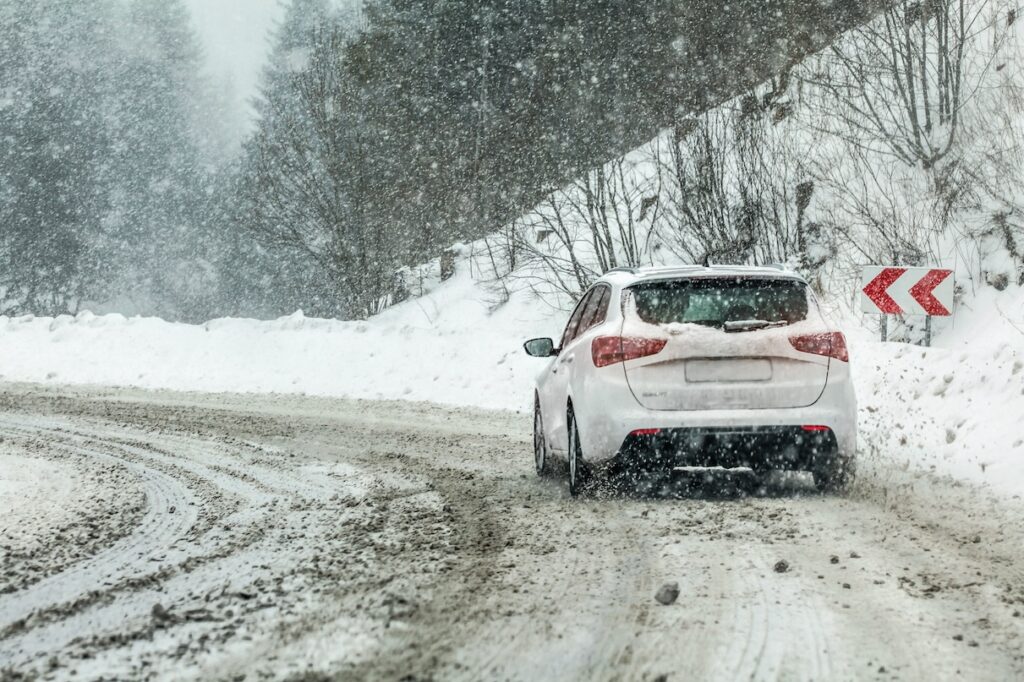
Embarking on the road with your new driver’s license is not just an exciting journey, it’s a rite of passage. But are you prepared for the unexpected twists and turns this new adventure might bring? This guide is more than just a collection of tips for new drivers; it’s your compass to navigating the roads with confidence and safety. You’ll discover not only how to hone your driving skills, but also how to master the subtleties of road safety, transforming you from a novice into a savvy, experienced driver. Step into this journey with us, where each tip is a milestone in your path to becoming an adept driver.
The Art of Safe Driving
Driving safely is crucial for your well-being and that of others on the road. Here are some essential tips to keep in mind:
- Wear your seatbelt: Always wear your seatbelt and ensure your passengers do the same. Seatbelts can be life-saving in an accident. NHTSA states, “If you buckle up in the front seat of a passenger car, you can reduce your risk of fatal injury by 45% and moderate to critical injury by 50%.”
- Observe speed limits: Always adhere to the speed limit and reduce your speed in poor road conditions. Speed limits are set for a reason, often considering the road type, traffic, and environmental conditions. Driving too fast can reduce your reaction time and increase the severity of accidents.
- Stay aware: Always be alert and aware of your surroundings. This includes other vehicles, pedestrians, and road conditions. Avoid distractions like using your phone, eating, or fiddling with the music. Paying attention helps you react quickly to potential hazards.
- Never trust other drivers: Expect the unexpected. Don’t assume other drivers will do what is expected of them. Be prepared for sudden stops, lane changes, or other unexpected maneuvers.
- Follow the 3-second rule: To ensure a safe following distance, use the 3-second rule. When the rear of the vehicle ahead of you passes a stationary object (like road signs), count “one-thousand-one, one-thousand-two, one-thousand-three.” If you pass the same object before you finish counting, you’re following too closely.
- Avoid tailgating: Maintain a safe distance from the vehicle in front of you. Tailgating can lead to rear-end collisions, especially if the vehicle ahead stops suddenly.
- Plan your route in advance: Familiarize yourself with your route before you start driving. This can reduce the need for sudden lane changes or turns that you’re not prepared for. Additionally, if you’re using your phone’s GPS, ensure it’s mounted in a holder at eye level for easy, safe viewing without distracting you from the road.
- Practice defensive driving: Anticipate potential hazards and be ready to respond. This includes keeping an eye on the cars around you and predicting their moves, as well as being prepared for unexpected obstacles.
- Maintain your vehicle: Regular maintenance, such as checking tire pressure, brakes, lights, and engine oil, can prevent accidents. A well-maintained vehicle is safer and more reliable.
- Be mindful of large vehicles: Give larger vehicles like trucks and buses extra space in front of you. They have larger blind spots and need more time and distance to stop. Remember, if you can’t see the driver in their side mirror, it’s likely they can’t see you and you’re following too closely.
- Avoid aggressive driving: Keep your cool in traffic. Aggressive driving, like speeding, harsh braking, and erratic lane changing, can lead to accidents.
- Use rest areas on a road trip: If you’re driving a long distance, take regular breaks. Fatigue can greatly impair your reaction time and judgment. A study by AAA Foundation shows that “The estimated crash risk associated with driving after only 4-5 hours of sleep compared with 7 hours or more is similar to the […] risk associated with driving with a blood alcohol concentration (BAC) equal to or slightly over the legal limit for alcohol in the US”.
- Learn proper techniques for driving in extreme weather: In conditions like rain, snow, or ice, increase your following distance double the 3-second rule as slippery roads increase braking distances. Remember, if you skid on ice, steer gently into the skid and ease off the accelerator, instead of braking suddenly.
- Be cautious at intersections: Intersections can be high-risk areas. Even if you have the right of way, look both ways and be prepared for other cars that might not stop.
- Never drive impaired: Driving under the influence of alcohol, drugs, or fatigue can have deadly consequences for you and others on the road as it significantly reduces your ability to operate a vehicle safely.
Vehicle Maintenance 101

Basic car care maintains your vehicle’s longevity and ensures your safety on the road. Two fundamental aspects of car maintenance are oil changes and tire pressure checks.
Oil Changes
Regular oil changes maintain your car engine’s health over its lifetime. Oil lubricates the engine’s moving parts, preventing excessive wear due to friction, and helps keep the engine cool. Over time, oil breaks down and becomes contaminated with dirt and debris from the engine, which diminishes its effectiveness. Typically, it’s recommended to change the oil every 3,000 to 5,000 miles, but this can vary depending on your vehicle and the type of oil used. Remember, using the right type of oil (as indicated in your manufacturer’s manual) is as important as the change frequency. Also, during an oil change, it’s a good idea to replace the oil filter to ensure the new oil stays cleaner.
Tire Pressure
Maintaining the correct tire pressure enhances safe driving and boosts fuel efficiency. Check your tire pressure at least once a month and before long trips. The correct tire pressure for your vehicle can usually be found in the owner’s manual or on a sticker inside the driver’s door. Use a reliable tire gauge, available for purchase at many gas stations and auto supply stores, to check the pressure when the tires are cold, as heat generated from driving can affect the pressure readings. Don’t forget to also check the spare tire. You can check and adjust your tire pressure at a gas station; many have air pumps equipped with pressure gauges. Besides pressure, regularly inspect your tires for tread wear and any visible damage like cuts or bulges, which can be a sign of more serious issues.
Regular vehicle maintenance is relatively simple and ensures your car’s longevity and safety on the road. The following outlines all important maintenance tasks and their recommended intervals to keep you safe on the road.
| Maintenance Task | Interval/When to Complete |
| Oil and oil filter change | Every 3,000 to 5,000 miles or as recommended by the manufacturer |
| Tire pressure check | Monthly and before long trips |
| Tire rotation | Every 6,000 to 8,000 miles or as recommended by the tire manufacturer |
| Air filter replacement | Every 12,000 to 15,000 miles or as needed |
| Brake inspection | At least once a year or as per driving conditions |
| Brake pad replacement | Every 25,000 to 70,000 miles, depending on the usage and pad quality |
| Battery check and clean | Every 3 to 6 months |
| Coolant/antifreeze check | Every 2 years or as per the manufacturer’s guidelines |
| Transmission fluid change | Every 30,000 to 60,000 miles or as per the manufacturer’s guidelines |
| Spark plug replacement | Every 30,000 to 100,000 miles, depending on the type |
| Belts and hoses check | At least once a year, and replace as needed |
| Headlights and taillights check | Monthly, and replace bulbs as needed |
| Windshield wipers replacement | At least once a year, or as wear is noticed |
| Wheel alignment | Every 2 to 3 years, or as needed |
| Exhaust system check | At least once a year for any visible rust or damage |
| Cabin air filter replacement | Every 15,000 to 30,000 miles, or as needed |
Neglecting this basic care can lead to larger, more expensive problems down the line and could compromise your safety on the road. Regularly performing these checks and maintenance tasks will keep your car running smoothly and reliably.
Elevate your vehicle maintenance with Motion By Mojio’s advanced vehicle safety technology. Get real-time vehicle health alerts, keeping you updated on your car’s condition and ensuring safety on the road. Experience the peace of mind that comes with our cutting-edge technology.
Vehicle Safety Features for Safe Driving
Understanding key safety features in cars is important when buying a new vehicle and driving safely. It allows you to take full advantage of the features available to you and enhance your safety while driving. Modern cars often come equipped with a range of safety features:
- Airbags: Inflate rapidly during a collision to provide a cushion for occupants, reducing injury risk. They’re positioned in the front and sides of the car’s interior.
- Anti-lock Braking System (ABS): Prevents the wheels from locking up during braking, particularly on slippery surfaces, allowing the driver to maintain steering control.
- Electronic Stability Control (ESC): Automatically applies brakes to individual wheels during sharp turns or sudden maneuvers to help prevent skidding or sliding sideways, and maintain vehicle control.
- Traction Control: Limits wheel spin during acceleration, improving traction on slippery surfaces.
- Blind Spot Monitoring: Alerts drivers to vehicles in their blind spots during lane changes, using flashing lights on mirrors and/or beeping sounds for enhanced safety.
- Automatic Emergency Braking (AEB): Detects potential collisions and automatically applies brakes to prevent or minimize an accident.
- Adaptive Cruise Control: Maintains a safe distance from the car ahead, automatically adjusting speed as needed.
These features collectively contribute to a safer driving experience, especially important for beginners who are still developing their driving skills.
Advanced Safety Solutions With Motion By Mojio
Motion by Mojio is designed to enhance the driving experience by focusing on safety, security, and convenience. It’s particularly beneficial for new drivers, teen drivers, and senior drivers, as it provides real-time feedback and alerts that help in cultivating safer driving habits. The array of solutions offered not only contributes to enhanced safety and security but also adds convenience to the everyday management of the vehicle. This technology, with its easy setup and wide compatibility with cars, makes for a smarter, safer, and more convenient car ownership experience.
Safety Solutions:
- Real behavior understanding: Helps new drivers understand their driving habits, fostering safer driving practices.
- Automatic crash notification: In the event of a severe crash, the system automatically notifies local emergency responders, potentially saving lives.
- Driving score: This solution provides an easy-to-understand score for each trip, encouraging safer driving behaviors for new drivers.
- Speed alerts: Allows setting custom speed limits in the app and alerts the driver when these limits are exceeded, promoting adherence to speed regulations.
Security Solutions:
- Disturbance alerts: Notifies the driver of any unusual activity, ensuring the vehicle’s security.
- Live GPS tracking: Keeps track of the vehicle’s location in real-time, offering peace of mind about its whereabouts.
- Geofences: Sends alerts when the vehicle enters or leaves predefined areas like home or work, adding an extra layer of security.
Convenience Solutions:
- Nearby fuel finder: Assists in locating nearby gas stations, making refueling easier and more efficient.
- Predictive maintenance alerts: Informs about potential mechanical issues, allowing for timely maintenance to avoid bigger problems.
- Vehicle health alerts: Keeps the driver updated on the vehicle’s health status, ensuring it remains in good condition.
- Tire check: A patented solution that monitors tire conditions, helping maintain optimal tire health.
Enhance your driving safety and convenience with Motion By Mojio. Explore our innovative solutions designed for new drivers. Try it now!
Handling Emergencies and Breakdowns
Encountering a road emergency can be a daunting experience, especially for a new driver. Knowing how to manage such situations effectively ensures your safety and that of other road users.
- Safely pull over to the side of the road, away from traffic, if your vehicle breaks down or is involved in an accident.
- Turn on your hazard lights to alert other drivers.
- If available, place reflective triangles or road flares behind your vehicle to increase visibility, especially in low light or bad weather conditions.
- Assess the situation; call emergency services immediately if anyone is injured. Avoid moving injured individuals unless there’s a direct threat like fire.
- If the vehicle is still operational and it’s safe, drive to a safer location away from traffic before calling for assistance.
- If the vehicle can’t be moved, stay inside with seat belts fastened until help arrives, unless remaining in the car is unsafe.
- While waiting for help, use your emergency kit, stay aware of your surroundings, and notify a loved one of your situation and location.
- Prioritize the safety of yourself and your passengers above all else.
Essential items for an emergency car kit:
- First aid kit
- Flashlight with extra batteries
- Reflective warning triangles or road flares
- Jumper cables
- Tire pressure gauge
- Spare tire and jack
- Basic tool kit (including screwdrivers, pliers, adjustable wrench)
- Work gloves
- Emergency blanket or space blanket
- Bottled water
- Non-perishable snacks (like energy bars)
- Portable battery charger (for mobile devices)
- Ice scraper and snow brush (in cold climates)
- Duct tape
- Tow rope or tow strap
- Fire extinguisher (small, automotive type)
- Window breaker and seatbelt cutter
- Extra clothing or warm blankets (in cold climates)
- Extra cash and important contact numbers in waterproof bag
Navigating Different Weather Conditions

Driving in adverse weather conditions such as rain, snow, and extreme conditions requires extra caution and a significant adjustment in driving style.
Rain
In rain, reduce your speed and maintain a greater distance from the vehicle ahead, as wet roads decrease tire traction and increase stopping distances. Use your headlights to improve visibility, but avoid high beams, which can cause glare.
Snow
In snowy conditions, drive slowly and smoothly, avoiding abrupt steering, braking, or accelerating. Use low gears to maintain traction, especially on hills. If your vehicle has snow mode, engage it. In extreme conditions like heavy snow, fog, or ice, consider postponing your trip. If you must drive, clear snow and ice from all windows, lights, and mirrors for maximum visibility. Always have winter tires if you live in an area with frequent snow.
In all adverse conditions, be extra vigilant for hazards, and remember that four-wheel or all-wheel drive improves traction but doesn’t shorten stopping distances. Be prepared with emergency supplies in your vehicle, and always check weather forecasts before heading out.
How Can I Be a Good Beginner Driver?
To be a good beginner driver, focus on mastering the basics, such as steering, braking, and lane management. Stay alert, follow traffic rules, and practice defensive driving. Gradually increase your driving in different conditions and traffic levels. Most importantly, learn from every drive and remain patient with yourself.
How Can I Drive Better as a New Driver?
As a new driver, improve your skills by practicing regularly in various driving conditions. Stay aware of your surroundings, keep a safe distance from other vehicles, and adhere to the speed limit. Familiarize yourself with your car’s features and handling. Also, seek feedback from your passengers and consider additional driving lessons if needed.
What Are the Tips for New Drivers Turning?
For new drivers when turning, remember to turn on your turn signals early, reduce your speed before the turn, and check for pedestrians and oncoming traffic. Steer smoothly and stay in your lane. After turning, accelerate gradually to normal speed. Practice turns in quiet areas before handling busy intersections.
What Is the Most Common Mistake of New Drivers?
One of the most common mistakes of new drivers is underestimating the importance of maintaining a safe following distance. Many beginner drivers tend to follow too closely to the vehicle ahead, not allowing enough space to react and stop safely in unexpected situations, leading to a higher risk of rear-end collisions.
The Road Ahead
As you embark on your driving journey, embracing these tips and strategies will not only enhance your safety but also enrich your overall driving experience. Each step taken towards responsible driving contributes to a safer road environment for everyone. Remember, the journey to becoming an experienced driver is continuous and evolving; there’s always something new to learn and ways to improve.
Transform how you drive with Motion By Mojio. Equip your car with cutting-edge safety features and real-time alerts. Don’t wait, upgrade your driving safety now.